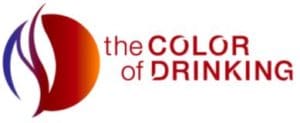Highlights: The Color of Drinking
The Color of Drinking: Alcohol as a Social Justice Issue
Reonda Washington, MPH, CHES, Substance Abuse Prevention Specialist at the University of Wisconsin-Madison, shared Color of Drinking (COD), her research on the drinking culture at the University of Wisconsin-Madison and its disproportionate impact on students of color. At UW-Madison, students of color had double the rate of nondrinking and half the rate of high-risk drinking compared to white students, and were disproportionally impacted by others’ drinking. We watched her full presentation prior to our meeting and facilitated a discussion of her findings and its implications for our own campuses.
 The take-aways from Ms. Washington’s research:
The take-aways from Ms. Washington’s research:
- Alcohol use by white students is a protective factor for academic and social success.
- Safety is a concern among all students. Students of color’s safety is impacted disproportionally more. Black and multiracial students were most likely to avoid places on- and off-campus due to concerns about others’ alcohol use.
- High-risk drinking is tied to how UW-Madison students connect and belong.
- Racial climate and microaggressions impact students of color’s wellbeing and retention.
- Allowances and exceptions are made academically to support drinkers and the alcohol culture.
The impact of Ms. Washington’s research:
- A dedicated officer is assigned to patrol the area where high-risk drinking is concentrated.
- Alcohol culture and its effects on students is a priority for Student Affairs.
- Students have latched onto alcohol not being inclusive.
- Student activists took COD data to the Chancellor to demand training for everyone on campus.
- The campus community is having discussions about the intersectionality of alcohol, race and belonging.
- Perspectives on sexual assault shifted. Women of color are victims in a predominantly white drinking culture.
Discussion
- We discussed how we can collect data to measure and tell the story on our campuses. The MD CAS has some data and there was interest in adding questions to explore this further. Suggested data sources included the following:
- Campus climate surveys
- Health surveys
- Police data
- Conduct data
- Housing data
- Transport data
- Focus groups
- A student on the call was enthusiastic about sharing this with her administration. It could be a good way to engage students in addressing alcohol-related problems in the campus community.
- We brainstormed ways to support BIPOC students. Having community liaisons, building positive relationships with the police, and helping police clearly understand the issues were a few possible solutions.
Highlights: The Color of Drinking
The Color of Drinking: Alcohol as a Social Justice Issue
Reonda Washington, MPH, CHES, Substance Abuse Prevention Specialist at the University of Wisconsin-Madison, shared Color of Drinking (COD), her research on the drinking culture at the University of Wisconsin-Madison and its disproportionate impact on students of color. At UW-Madison, students of color had double the rate of nondrinking and half the rate of high-risk drinking compared to white students, and were disproportionally impacted by others’ drinking. We watched her full presentation prior to our meeting and facilitated a discussion of her findings and its implications for our own campuses.
 The take-aways from Ms. Washington’s research:
The take-aways from Ms. Washington’s research:
- Alcohol use by white students is a protective factor for academic and social success.
- Safety is a concern among all students. Students of color’s safety is impacted disproportionally more. Black and multiracial students were most likely to avoid places on- and off-campus due to concerns about others’ alcohol use.
- High-risk drinking is tied to how UW-Madison students connect and belong.
- Racial climate and microaggressions impact students of color’s wellbeing and retention.
- Allowances and exceptions are made academically to support drinkers and the alcohol culture.
The impact of Ms. Washington’s research:
- A dedicated officer is assigned to patrol the area where high-risk drinking is concentrated.
- Alcohol culture and its effects on students is a priority for Student Affairs.
- Students have latched onto alcohol not being inclusive.
- Student activists took COD data to the Chancellor to demand training for everyone on campus.
- The campus community is having discussions about the intersectionality of alcohol, race and belonging.
- Perspectives on sexual assault shifted. Women of color are victims in a predominantly white drinking culture.
Discussion
- We discussed how we can collect data to measure and tell the story on our campuses. The MD CAS has some data and there was interest in adding questions to explore this further. Suggested data sources included the following:
- Campus climate surveys
- Health surveys
- Police data
- Conduct data
- Housing data
- Transport data
- Focus groups
- A student on the call was enthusiastic about sharing this with her administration. It could be a good way to engage students in addressing alcohol-related problems in the campus community.
- We brainstormed ways to support BIPOC students. Having community liaisons, building positive relationships with the police, and helping police clearly understand the issues were a few possible solutions.

 The take-aways from Ms. Washington’s research:
The take-aways from Ms. Washington’s research: